Rob Bignell's Blog, page 331
June 19, 2014
Six useful tips for self-editing your book
Once you’ve 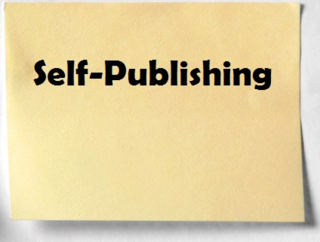 written your book, you need to edit it. Though you certainly can (and should) have an outside editor at least proofread your book, you’ll need to do some of that work yourself as well. That’s because no book really is done after writing a first draft; in fact, you’ll probably find a lot that you want to change after reading what you initially wrote. In addition, you’ll want to read over any corrections that an editor makes, if only to ensure that he didn’t unintentionally change the meaning of a passage you wrote.
written your book, you need to edit it. Though you certainly can (and should) have an outside editor at least proofread your book, you’ll need to do some of that work yourself as well. That’s because no book really is done after writing a first draft; in fact, you’ll probably find a lot that you want to change after reading what you initially wrote. In addition, you’ll want to read over any corrections that an editor makes, if only to ensure that he didn’t unintentionally change the meaning of a passage you wrote.
All too often when self-editing, though, authors have difficulty finding their own errors. That’s because authors usually are too close to their own writing. They know what they meant and being familiar with the content often glaze over typos.
Fortunately, there are some steps you can take to help yourself edit your own manuscript:
g Use spell check – Don’t rely on spell and grammar check to catch all errors, but it’ll catch a number of basic typos, particularly misspellings. Take your time using spell and grammar checks; that is, don’t speed through it, or you run the risk of okaying an error that the computer program caught.
g Edit a printed copy – Especially for people who grew up without computers, print out your book and edit it with a red or green pen. Since we read material on computer screens (typically by scanning bullet points with breaks between paragraphs) differently than we do on a piece of paper, you’re more likely to catch typos by looking at a printout.
g Read it aloud – Go a step further and read the printed copy out loud. Reading aloud forces you to read every word, to hear the rhythm of the sentences, and to go slower, improving the odds that you’ll spot typos.
g Edit in small chunks – The longer you edit a work, the more likely your eyes will glaze over the passages as you near the ending. Rather than attempting to edit half of a book in a day, limit yourself to a chapter or two. If you must edit half of a book in a day, take a break between chapters; be sure to do some other activity so that your mind doesn’t think about the book during the break.
g Edit backward – Read the printed copy of the book from end to beginning; that is, read the book’s last paragraph first, the second to last paragraph next, and so on. This method presumes you’ve previously reviewed the book for its organization and are good with it, as you’ll mainly catch typos using this method.
g Correct and re-edit – Don’t be satisfied with one read through of a book. After making the corrections from your first round, edit it again. At the very least, read the sections you corrected to ensure that your editing didn’t introduce typos or other errors into the piece.
Need an editor? Having your book, business document or academic paper proofread or edited before submitting it can prove invaluable. In an economic climate where you face heavy competition, your writing needs a second eye to give you the edge. Whether you come from a big city like Detroit or a small town like Mud Lake, Idaho, I can provide that second eye.
<A HREF="http://ws-na.amazon-adsystem.com/widg... Widgets</A>Related articles
 Always review proof your book before okaying it
Always review proof your book before okaying it Some guidelines for reviewing a book
Some guidelines for reviewing a book
June 18, 2014
Pray there's no mix-up: Angel vs. angle
Oh what 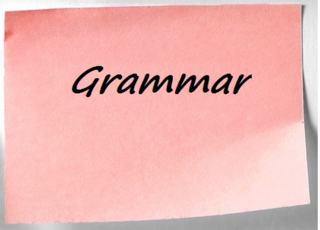 a difference a letter makes! Transpose the letters “l” and “e” in these two words, and you end up with very different meanings.
a difference a letter makes! Transpose the letters “l” and “e” in these two words, and you end up with very different meanings.
An angel is a supernatural being with feathered wings on its back, as in An angel descended from the sky and said she was here to help me through these difficult times.
An angle, however, is a figure formed when two lines meet and share a common endpoint, as in We studied angles during geometry class.
Need an editor? Having your book, business document or academic paper proofread or edited before submitting it can prove invaluable. In an economic climate where you face heavy competition, your writing needs a second eye to give you the edge. Whether you come from a big city like Phoenix, Arizona, or a small town like Hooppole, Illinois, I can provide that second eye.
<A HREF="http://ws-na.amazon-adsystem.com/widg... Widgets</A>
Related articles
 Five Great Quotations for Aspiring Writers
Five Great Quotations for Aspiring Writers Editing client releases supernatural thriller
Editing client releases supernatural thriller
June 17, 2014
Avoid dumping backfill into your story
Sometimes to 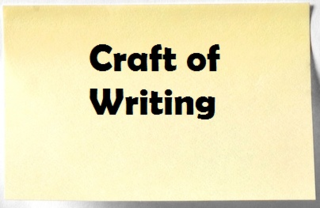 keep a story moving forward, background information must be given. When this information interrupts the story flow, it is referred to as backfill.
keep a story moving forward, background information must be given. When this information interrupts the story flow, it is referred to as backfill.
Depending on the approach use to provide backfill, this can be a story killer. That’s because most forms of backfill amount to exposition.
Among the types of backfill that appear in stories are:
g Flashbacks – Sometimes significant, formative events from the character’s past can be told dramatically between scenes in the current story line.
g Dream sequence – To reveal information about characters’ true nature or a character’s emotional state, such as their fears, dreams might be used dramatically to present symbols and clues to readers.
g Explanation to an ignorant character – When a character is introduced into a story, sometimes he must be caught up on what’s going on. To resolve that, another character summarizes for him what has occurred so far.
g Lecture – Often to provide readers with the information needed so they can understand how a problem will be solved, one character will provide another one (a reader surrogate) with the encyclopedia-like information.
Virtually all of these backfill methods ought to be avoided or at least used sparingly. The explanation to an ignorant character and the lecture really are nothing more than info dumps. The dream sequence is becoming cliché, and rarely do people dream as authors describe their characters dreaming, especially when trying to force symbolism upon the scene. A flashback is really the only acceptable way to provide backfill, but if used in excess it can lose its effectiveness and stress the story’s forward momentum.
Need an editor? Having your book, business document or academic paper proofread or edited before submitting it can prove invaluable. In an economic climate where you face heavy competition, your writing needs a second eye to give you the edge. I can provide that second eye.
Related articles
 Avoid violating chronology when plotting story
Avoid violating chronology when plotting story Maintain sense of tension through pace
Maintain sense of tension through pace Use bridge to transition from flashback to present
Use bridge to transition from flashback to present
June 16, 2014
Editor appearing at Musky Fest this weekend
If traveling  to northern Wisconsin this weekend, be sure to stop at Musky Fest in downtown Hayward, where I and several other regional writers will have booths on Author’s Row. You’ll be able to meet and talk with nearly a dozen published authors, as well as purchase their books. Two of my hiking guidebooks – Headin’ to the Cabin: Day Hiking Trails of Northwest Wisconsin and Hittin’ the Trail: Day Hiking the St. Croix National Scenic Riverway – include Hayward and the surrounding communities. Author’s Row will be open Friday, June 19 from 10 am–6 pm and Saturday, June 20 from 9 am- to 6 pm. See you there!
to northern Wisconsin this weekend, be sure to stop at Musky Fest in downtown Hayward, where I and several other regional writers will have booths on Author’s Row. You’ll be able to meet and talk with nearly a dozen published authors, as well as purchase their books. Two of my hiking guidebooks – Headin’ to the Cabin: Day Hiking Trails of Northwest Wisconsin and Hittin’ the Trail: Day Hiking the St. Croix National Scenic Riverway – include Hayward and the surrounding communities. Author’s Row will be open Friday, June 19 from 10 am–6 pm and Saturday, June 20 from 9 am- to 6 pm. See you there!
Need an editor? Having your book, business document or academic paper proofread or edited before submitting it can prove invaluable. In an economic climate where you face heavy competition, your writing needs a second eye to give you the edge. Whether you're from a big city like Los Angeles or a small town like Hell Town, Ohio, I can provide that second eye.
<A HREF="http://ws-na.amazon-adsystem.com/widg... Widgets</A>Related articles
 Editor releases first "Hittin' the Trail" guidebook
Editor releases first "Hittin' the Trail" guidebook Second 'Hittin' the trail' guidebook released
Second 'Hittin' the trail' guidebook released Editor's hiking guidebook debuts at No. 26
Editor's hiking guidebook debuts at No. 26 Metro paper features editor's hiking book
Metro paper features editor's hiking book
June 15, 2014
Five Great Quotations about Short Stories
“The short 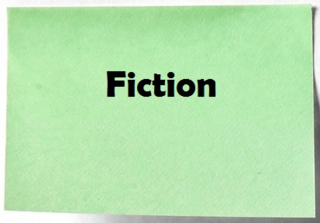 story is as diverse and exciting a form as the novel, offering the condensed satisfaction of a good poem.” - Sean O’Brien
story is as diverse and exciting a form as the novel, offering the condensed satisfaction of a good poem.” - Sean O’Brien
“Find the key emotion; this may be all you need know to find your short story.” - F. Scott Fitzgerald
“One of my many theories about short stories is that their titles and first lines ought to be memorable, because if not memorable they will not be remembered, and if not remembered the stories will not be reprinted (because no one can find them).” - Damon Knight
“The makers of the short story have rarely been good novelists.” - V. S. Pritchett
“A short story...can be held in the mind all in one piece. It's less like a building than a fiendish device. Every bit of it must be cunningly made and crafted to fit together perfectly and without waste so it can perform its task with absolute precision. That purpose might be to move the reader to tears or wonder, to awaken the conscience, to console, to gladden, or to enlighten. But each short story has one chief purpose, and every sentence, phrase, and word is crafted to achieve that end. The ideal short story is like a knife - strongly made, well balanced, and with an absolute minimum of moving parts.” - Michael Swanwick
Need an editor? Having your book, business document or academic paper proofread or edited before submitting it can prove invaluable. In an economic climate where you face heavy competition, your writing needs a second eye to give you the edge. Whether you live in a big city like Boston or a small town like Ethan, South Dakota, I can provide that second eye.
<A HREF="http://ws-na.amazon-adsystem.com/widg... Widgets</A>Related articles
 Five great quotations about writing
Five great quotations about writing Five Great Quotations for Aspiring Writers
Five Great Quotations for Aspiring Writers Place commas inside quotation marks
Place commas inside quotation marks
June 14, 2014
Avoid temptation to create author surrogate
One temptation 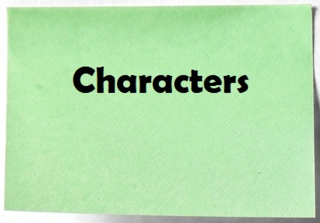 to avoid when creating characters is to use an author surrogate. An author surrogate is a character who the writer models after himself, such as Jubal Harshaw is author Robert A. Heinlein in his novel “Stranger in a Strange Land.”
to avoid when creating characters is to use an author surrogate. An author surrogate is a character who the writer models after himself, such as Jubal Harshaw is author Robert A. Heinlein in his novel “Stranger in a Strange Land.”
There are a couple of problems with an author surrogate. One is that such a character dominates the story when it should not, and this is to the detriment of other characters and ultimately the entire tale. After all, if the surrogate is the author, the author isn’t likely to relinquish his time on stage, even when the story calls for him to step aside for a few minutes. Another problem is that the surrogate possesses too many positive traits and too few faults to be considered real. It is a rare human, indeed, who sees himself as having fewer good qualities than faults, and this conceit will make its way into the story.
Of course, there’s a little bit of the author in every character. So how much of the author should be in a character? There’s no simple answer. The character obviously shouldn’t be an idealized version of the author. Instead, the character probably should have unique motivations and personal conflicts, many of which are addressed by the author thinking about how he would solve them rather than being an exact duplicate of how the author did confront them.
And author surrogates can work – as is the case with Jubal Harshaw – when readers also can closely identify with that character. How many science fiction readers, after all, haven’t felt that they were a stranger in a strange land?
Note that the idea of an author surrogate is closely related to authorism. It also is referred to as the author’s persona.
Need an editor? Having your book, business document or academic paper proofread or edited before submitting it can prove invaluable. In an economic climate where you face heavy competition, your writing needs a second eye to give you the edge. Whether you hail from a big city like Boston or a small town like Patriot, Indiana, I can provide that second eye.
<A HREF="http://ws-na.amazon-adsystem.com/widg... Widgets</A>Related articles
 Constructing your story's main character
Constructing your story's main character Follow Heinlein's Rules to land big book deal
Follow Heinlein's Rules to land big book deal Avoid 'As you know' Syndrome in fiction
Avoid 'As you know' Syndrome in fiction Avoid exposition (Show, don't tell!)
Avoid exposition (Show, don't tell!)
June 13, 2014
Marketing tip: Give out free bookmarks
One great  way to get the word out about your titles is to give out bookmarks promoting it. While this initially makes for good swag when you sell your book at a book fair or festival, it offers the added benefit of being a free ad for whatever you’ve written every time the reader opens your book. In addition, once the book is read, it might be borrowed to someone else or the bookmark itself might be left lying around and used for another volume by someone else in the household. The bookmark then continues to be a free ad for you. Be sure to include a website address for your titles on the bookmark.
way to get the word out about your titles is to give out bookmarks promoting it. While this initially makes for good swag when you sell your book at a book fair or festival, it offers the added benefit of being a free ad for whatever you’ve written every time the reader opens your book. In addition, once the book is read, it might be borrowed to someone else or the bookmark itself might be left lying around and used for another volume by someone else in the household. The bookmark then continues to be a free ad for you. Be sure to include a website address for your titles on the bookmark.
Need an editor? Having your book, business document or academic paper proofread or edited before submitting it can prove invaluable. In an economic climate where you face heavy competition, your writing needs a second eye to give you the edge. Whether you livein a big city like Washington DC or a small town like Westgate, Iowa, I can provide that second eye.
<A HREF="http://ws-na.amazon-adsystem.com/widg... Widgets</A>Related articles
 Five Great Quotations about Fiction
Five Great Quotations about Fiction When to use affect vs. effect
When to use affect vs. effect How to get rid of Word's proofreading marks
How to get rid of Word's proofreading marks How to link your ebook's table of contents
How to link your ebook's table of contents Include note asking readers to post a review
Include note asking readers to post a review
June 12, 2014
No need to purchase SAN for self-published book
Sometimes self-publishing  authors are advised that they need to purchase a Standard Address Number (SAN) for their book released in the United States. Be wary of such advice, especially if it comes from a salesperson.
authors are advised that they need to purchase a Standard Address Number (SAN) for their book released in the United States. Be wary of such advice, especially if it comes from a salesperson.
A SAN is a seven-digit identifier used to identify an address, usually for a publisher or an associated company, such as a distributor. Bookstores, libraries, printers and publishers alike use this number, mainly to avoid miscommunication errors. Think of it this way: If the government uses your social security number when referring to you, there’s less of a chance of mixing you up with someone else who might have the same first and last name.
Since you’re self-publishing, reason suggests that if you purchase an ISBN and become your own publisher that you ought to also purchase a SAN.
You don’t need one, however. Unless you’re keeping separate addresses for billing, shipping and so on, a SAN won’t benefit you. In addition, there’s no requirement that you purchase a SAN to publish.
Need an editor? Having your book, business document or academic paper proofread or edited before submitting it can prove invaluable. In an economic climate where you face heavy competition, your writing needs a second eye to give you the edge. I can provide that second eye.
<A HREF="http://ws-na.amazon-adsystem.com/widg... Widgets</A>Related articles
 Select array of distribution channels to sell book
Select array of distribution channels to sell book What is an 'imprint' in self-publishing?
What is an 'imprint' in self-publishing? How to arrange a public book reading/signing
How to arrange a public book reading/signing How to get your title into bookstores
How to get your title into bookstores Why bookstores don't carry self-published books
Why bookstores don't carry self-published books
June 11, 2014
How much more can we take? Gage vs. gauge
Some writing 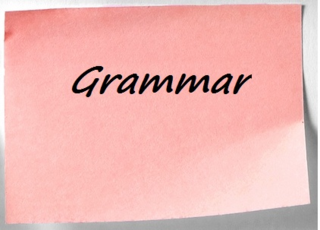 isn’t measuring up in the gauge vs. gage department.
isn’t measuring up in the gauge vs. gage department.
Gauge (with a “u”) relates to measuring. It can mean to measure (verb), instruments that measure (noun) or an actual measurement (noun).
Gage means an item that one offers to prove their pledge is serious (noun).
As the language evolves, gauge soon may become obsolete, at least in American English, where gage increasingly is used in its place. This probably has arisen because for some nautical terms, gage rather than gauge is used when referring to instruments that measure, such as weather gage and lee gage.
Bottom line: Until the shift in the language’s direction is complete, keep using gauge when referring to measurements.
Need an editor? Having your book, business document or academic paper proofread or edited before submitting it can prove invaluable. In an economic climate where you face heavy competition, your writing needs a second eye to give you the edge. Whether you come from big city like Houston, Texas, or a small town like Salt Lick, Kentucky, I can provide that second eye.
<A HREF="http://ws-na.amazon-adsystem.com/widg... Widgets</A>
Related articles
 When to use affect vs. effect
When to use affect vs. effect Time to get it right: Past vs. passed
Time to get it right: Past vs. passed
June 10, 2014
Avoid anachronisms in stories set in past
One of 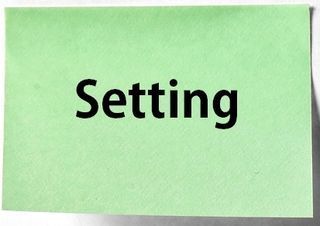 the problems of living in our era of fast-paced technological change is that we don’t have a good sense of when such products that are such a common part of our lives today actually existed. Should a writer not do the proper research and so include a device common today in time period in which it did not exist, that object is an anachronism.
the problems of living in our era of fast-paced technological change is that we don’t have a good sense of when such products that are such a common part of our lives today actually existed. Should a writer not do the proper research and so include a device common today in time period in which it did not exist, that object is an anachronism.
While typically a modern day object placed in the past – such as a desktop computer in the 1960s – a number of different anachronisms can appear in one’s writing. Among them are:
g References to places that didn’t exist at time of the story (Ex: Using the USSR in a story set in 1916)
g Juxtapositions of people who could not have met (Ex.: Julius Caesar and Jesus could not have met as they lived close to a half-century apart.)
g Affiliations and organizations from a later time (Ex: Using the United Nations in a story set in 1939)
g Indirect evidence of technologies that did not exist at time of story (Ex: Radiation from an atomic blast in a story set before 1945)
g Misplaced breeds of domesticated animals (Ex: A golden retriever during Roman times, as the dog was bred only after guns were invented).
There are a number of good reasons to avoid these incongruities. The first is to maintain believability, as they break the verisimilitude of a story. While some readers may not notice the mistake, enough will, and at least one or two of them will point out to the rest of the world that you got it wrong. Secondly, as an author, you should strive to be historically accurate. In the past, sometimes anachronisms were used in stories to make a point; today, however, historical realism generally is preferred.
One anachronism you probably won’t be able to avoid is language anachronism. English speakers of the past used a different vocabulary, different expressions and slightly different grammar than English speakers of today, after all. Most readers are willing to forgive this type of anachronism as rewriting the piece so it’s in the language of that day would make it difficult to read (Just give Mark Twain’s “Huckleberry Finn” a try if you have any doubts.)
Need an editor? Having your book, business document or academic paper proofread or edited before submitting it can prove invaluable. In an economic climate where you face heavy competition, your writing needs a second eye to give you the edge. Whether you come from a big city like Dallas, Texas, or a small town like Pleasure Bend, Louisiana, I can provide that second eye.
Related articles
 Avoid exposition (Show, don't tell!)
Avoid exposition (Show, don't tell!) Some guidelines for reviewing a book
Some guidelines for reviewing a book



